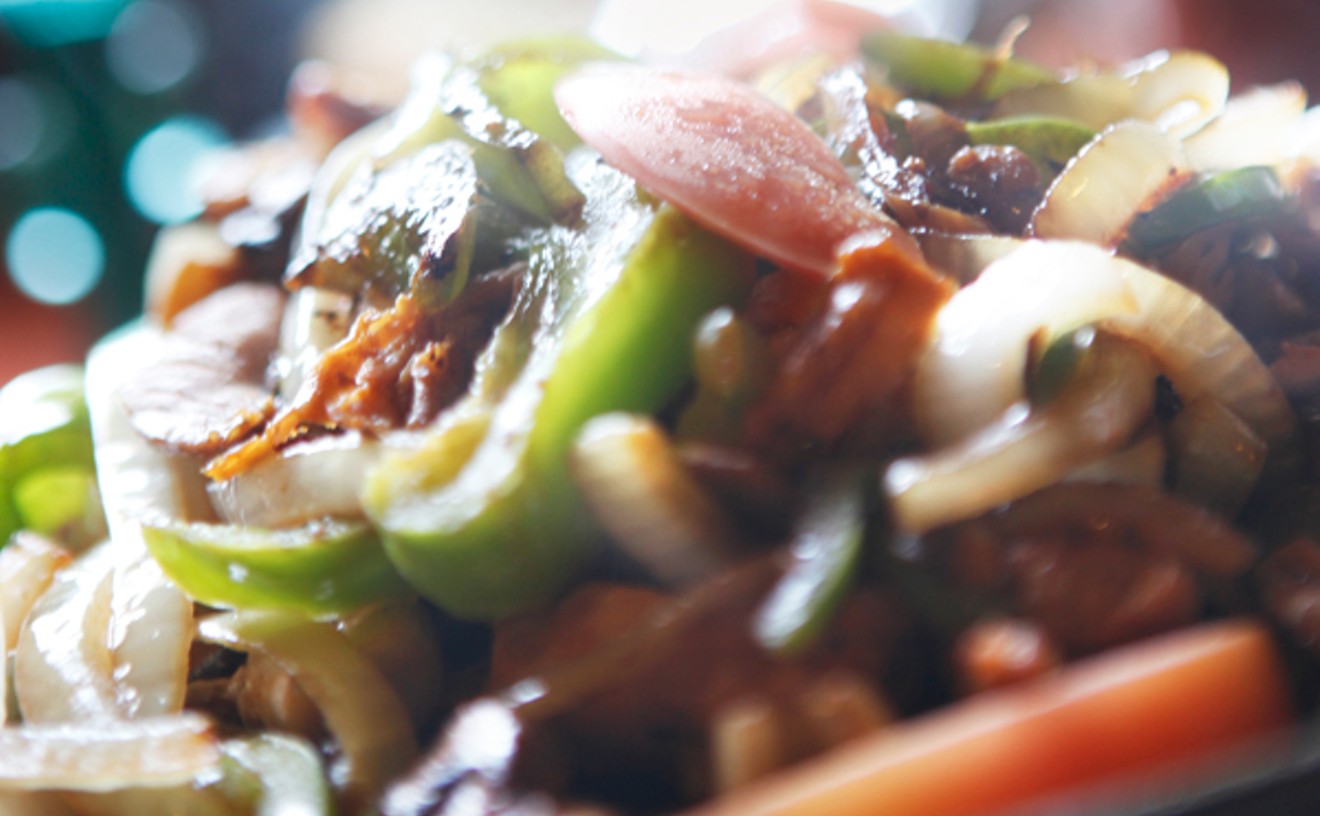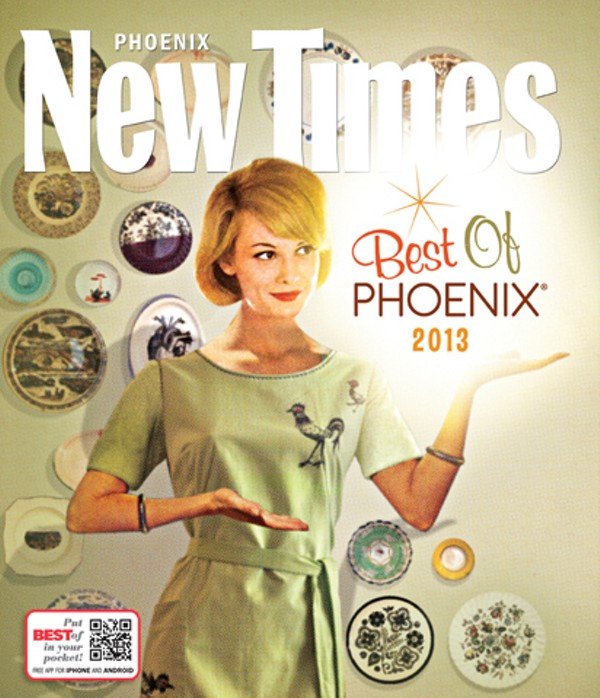Los Olivos Mexican Patio opened in Scottsdale in 1947, and waitress Serena Cays has been there almost since the beginning. Launched by restaurateur Tomas Corral, Los Olivos has been handed down through three generations of the Corral family, nearly all of whom has worked there — although none so famously as 75-year-old Cays, who has waited table there since 1953. Cays is the aunt of the current owner, Maria Corral-Ramirez, whose affectionate exasperation with her mother's sister ("She's a handful, and she refuses to retire!") is filled with love. It's hard not to be crazy about Cays, who herself loves a good Reuben and her long-ago home of Mexico.
Robrt Pela: How did you wind up here?
Czarina Cays: You mean in Scottsdale? Or serving the enchiladas?
RP: I mean Scottsdale.
CC: We lived in the ranch, in Mexico. I am from Mexico. A Mexican, si? And this man who owned Los Olivos came to Mexico to look for gold. And this nice man, he fell in love with my sister. I was about to start high school. You know? High school?
RP: Yes, high school. It comes after grade school.
CC: So, my family. Where was I?
RP: You were about to start high school. Some guy fell in love with your sister.
CC: Sí, high school, in Mexico. I came here to visit my sister, she stayed and married her husband. And it was time to go back to Mexico, to go to high school, and I got to the border, and I said, "I don't have any papers, but I need to get back home." And the man at the border said, "Oh, no. You are too pretty to leave, we want you to stay here, and go to school in the United States."
RP: Boy. Those were the days.
CC: Que?
RP: Nothing.
CC: So I stayed in the United States. I was very lovely, then.
RP: You're still lovely.
CC: Lonely. I was very lonely. In Scottsdale. There was nobody living here then. It was a very small town. I didn't want it. I wanted Mexico. I cried a lot. All the time, I cried for months. No one at Scottsdale High School spoke Spanish. There was one Spanish class, and no one spoke to me. I couldn't understand them. They couldn't understand me.
RP: Did you eventually learn English?
CC: I stopped going to school. I got a job here, during vacation.
RP: At Los Olivos?
CC: Yes. Do you ever eat here?
RP: All the time. You've waited on me!
CC: I have? I see so many people. I don't remember everyone.
RP: No problem. So you dropped out.
CC: Yes. It was 1953. I worked in the kitchen at Los Olivos. It was not a place for a young girl, the kitchen. So I said, "I'm gonna learn English and work in the dining room!"
RP: And here you are.
CC: Yes. Sixty years, here I am.
RP: So you've watched Scottsdale really change.
CC: Oh, yes. You know, when I first got here, my mother, she was thinking someone was going to take me. Kidnap me. It was so wild. Not like home. I got here in Scottsdale and I thought, "This is the United States? I'd rather be on my ranch in Mexico."
RP: But you stayed.
CC: I just stayed. Si. I got married here. A bartender, a very nice man. After he died, 20 years ago, I went back to Mexico for a visit. And my boyfriend that I had in Mexico, when I was a girl? He was still there, and he said, "I will marry you, and you won't have to work." And I said to him, "You know what? I prefer to work."
RP: Why do you still work?
CC: I got the bills! Plus the health insurance is good.
RP: Have you had the same customers for years?
CC: Oh, yes. People come to Los Olivos from New York, and Canada, and they ask for me.
RP: Are people nicer today than they used to be?
CC: No! (laughs) People used to be nicer. A lot of people are scary, today. You go to the store and they are in line being mean to the clerk, they're talking on the phone. Not nice. Scary.
RP: Do you ever feel like you've served your last enchilada?
CC: Uh-huh. I loved work for many years, the people, but now not so much. It's very hard. A lot of walking. I work two days a week.
RP: Tell me a story about the worst customer you've ever had.
CC: No!
RP: Come on.
CC: Well, everyone is pretty nice to me. I had one couple, many years ago, they complained to the owners about me. My husband was very sick, he was dying from cancer, and I was not doing good at work. My mind was thinking of my husband. Maybe not so much the tacos. So these people, they complained. But now, when they come in, they ask for me. So, you know. Maybe they like me now.
RP: Or maybe they like bad service. Do you eat at Los Olivos?
CC: Let me tell you, I eat beans too much. And the enchilada. They're very good here, everything is good here. But I like to have a Reuben. I like the French dip, I like a good steak.
RP: Where do you go for a French dip?
CC: The Salt Cellar. My son has been a bartender there for 13 years. Best food I ever eat. Also good is the sandwiches at Streets of New York. I eat a big sandwich and two eggs and pound cake. I eat and eat and I don't gain a pound, but the doctors can't find anything wrong with me.
RP: What's the best thing on the menu at Los Olivos?
CC: Los fajitas! And the Camarones a la Veracruzana. I love enchiladas.
RP: And the worst thing on your menu?
CC: (Long pause) Maybe the ground beef tacos. Why do people order this? We have delicious shredded beef. People should order shredded beef. That's just life.








